Avoiding Common Car Seat Installation Mistakes
Our research shows that even experienced parents and caregivers can make mistakes when installing a child safety seat. However, with initial practical instruction, you can get an accurate and secure installation every time.
Let’s assume you’ve selected the best seat for your child’s age and size and that, prior to installing the child safety seat, you viewed video car seat installation tips on our website or consulted with a child passenger safety technician at a car seat check. You’ve also reviewed the safety instruction manual for both your vehicle and the child safety seat, and now have your rear-facing or forward-facing child safety seat with a harness installed into your vehicle. Take a few minutes to make sure you have avoided the most common and potentially dangerous installation errors by following the checklist below.
If you encounter any of these common errors, it’s important to correct them by referring back to the manuals, videos or consulting with a professional at a car seat check. When in doubt, seek extra help!
1. Tightness of the installation
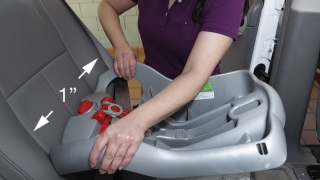 A properly installed child safety seat should not be able to move more than 1 inch in any direction (side to side or outward). Grip the seat at or near the belt path and make sure there is less than 1 inch of movement.
A properly installed child safety seat should not be able to move more than 1 inch in any direction (side to side or outward). Grip the seat at or near the belt path and make sure there is less than 1 inch of movement.
2. Position of the shoulder straps
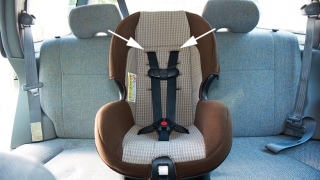 While the chest clip should always be at armpit level, for rear-facing seats, the shoulder straps must be threaded through slots that are at or below your baby’s shoulders. For forward-facing seats, the shoulder straps should be at or above your child’s shoulders.
While the chest clip should always be at armpit level, for rear-facing seats, the shoulder straps must be threaded through slots that are at or below your baby’s shoulders. For forward-facing seats, the shoulder straps should be at or above your child’s shoulders.
3. Pinch test
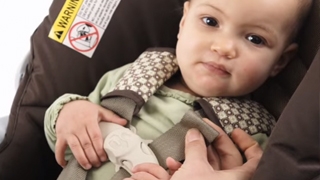 Once the harness is buckled, test the snugness by trying to pinch extra material at the top of your child’s shoulders. If you are able to pinch extra webbing, the harness is too loose. Make sure to tighten and re-check.
Once the harness is buckled, test the snugness by trying to pinch extra material at the top of your child’s shoulders. If you are able to pinch extra webbing, the harness is too loose. Make sure to tighten and re-check.
4. Check the belt path
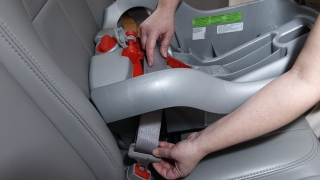 Convertible safety seats that transition from rear- to forward-facing have multiple slots for routing the seat belt during installation. Check the instruction manual for your child safety seat to make sure the seat belt is routed properly based on the direction of the installation.
Convertible safety seats that transition from rear- to forward-facing have multiple slots for routing the seat belt during installation. Check the instruction manual for your child safety seat to make sure the seat belt is routed properly based on the direction of the installation.
5. Use the top tether
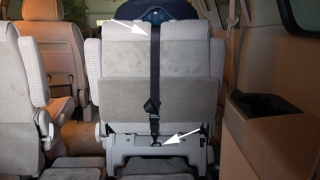 You can further optimize the safety of your child safety seat by using its top tether strap located at the top of the seat. Check your car seat and vehicle manuals for proper use of the tether for your seat. If use of the tether is appropriate, tightly attach the seat's top tether strap to the correct anchor point in the vehicle and tighten. Check your car owner's manual to identify the correct anchor point.
You can further optimize the safety of your child safety seat by using its top tether strap located at the top of the seat. Check your car seat and vehicle manuals for proper use of the tether for your seat. If use of the tether is appropriate, tightly attach the seat's top tether strap to the correct anchor point in the vehicle and tighten. Check your car owner's manual to identify the correct anchor point.
Additional resources
If you find yourself making some of these common errors, don’t worry! Installing a child safety seat can be challenging, but there are lots of resources to help. Do your best to correct these errors on your own with the help of your child safety seat and vehicle manuals. If you are still unsure, consult a trained child passenger safety technician at a local car seat check point. This person can show you how to correct errors and achieve an optimal, secure installation.